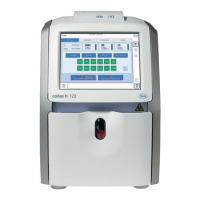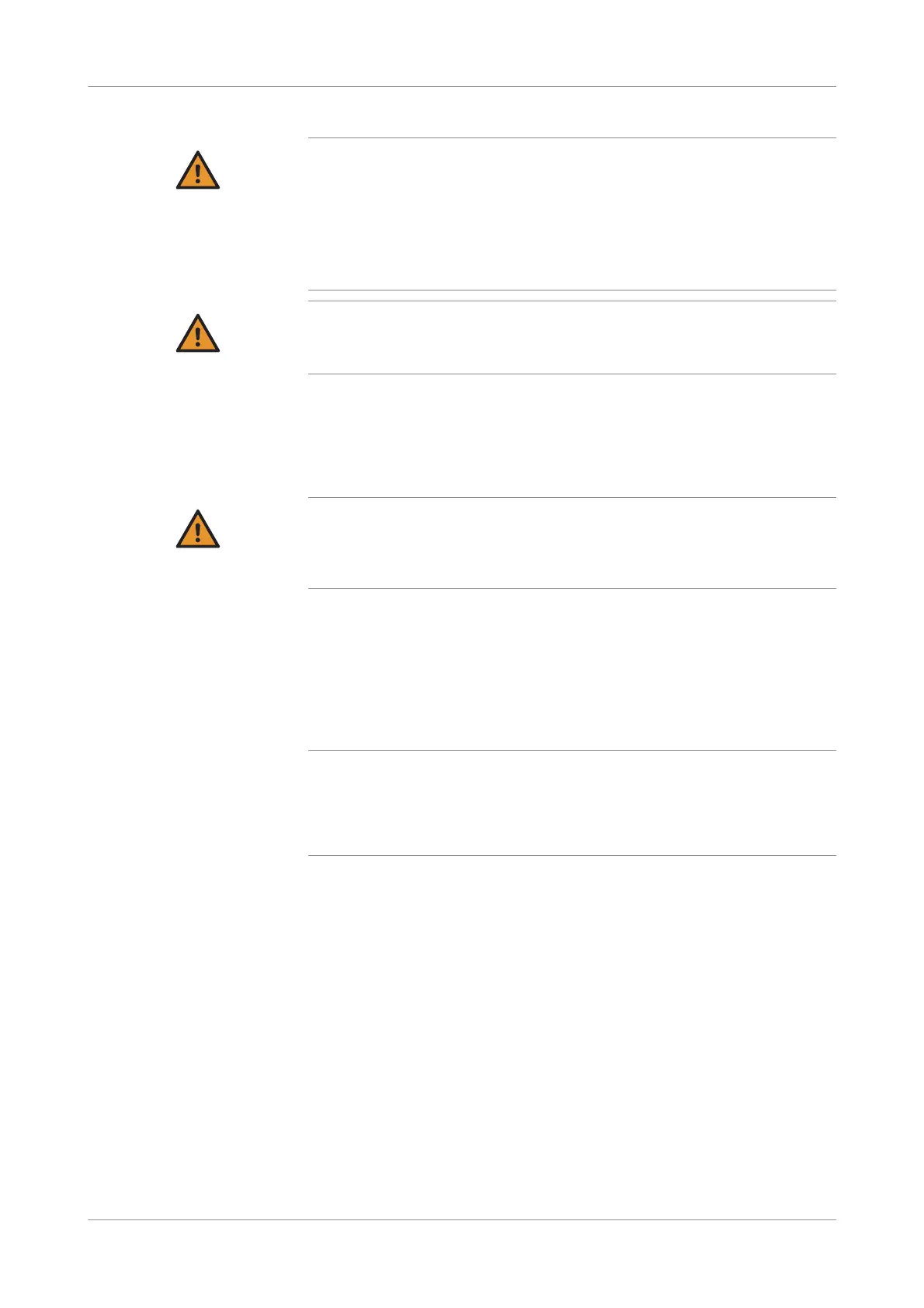Roche Diagnostics
140 Instructions for Use · Version 13.0
6 Measurement cobas b 123 POC system
Preanalytics
WARNING
Incorrect calcium results due to inappropriate sample handling
Exposing samples for measuring ionized calcium values to ambient air reduce the amount
of ionized calcium. This may lead to incorrect ionized calcium results, which may endanger
patient lives.
r Immediately measure your sample after collecting it.
r If you cannot measure your sample immediately after collecting it, do not expose it to
ambient air.
WARNING
Deviations in measurement results
Measuring hemolyzed blood samples may lead to deviations in measurement results.
r After you measure a hemolyzed blood sample, perform a 2P calibration.
u Clinical and Laboratory Standards Institute. Procedures for the collection of arterial
blood specimens; CLSI document H11-A4; Approved Standard (2004), Vol. 24, No. 28
Localized hemolysis is possible when collecting blood from regions that have been
compressed. This can vary a patient’s potassium value by up to 20% from its normal
state. Avoid compressing sample collection sites before drawing blood from a patient.
WARNING
Risk of incorrect results due to air in the sample
Air within blood samples may falsify measurement values.
r To avoid incorrect patient results, perform measurements on samples as soon as you
have collected your sample.
Metabolite measurements are only possible in samples with an approximate
physiological ion background and pH value, and an average physiological buffer
capacity of the sample.
Anticoagulants
NOTICE
Permitted anticoagulants
r Heparin salts are the only permitted anticoagulants for analyses with the
cobas b 123 POC system. Other anticoagulants, such as EDTA, citrate, oxalates,
fluorides and ammonia-containing anticoagulants have a significant effect on the
blood pH value and other parameters and cannot be used.
Sample collection, specifically for tHb, SO
2
and Hct measurements
Whole blood samples have to be thoroughly mixed immediately before measuring in
order to have an even distribution of red blood cells and plasma.
To ensure optimum mixing, roll the syringe in your hands, invert and roll it again.
Repeat this for 30 seconds. If there are sedimented red blood cells in the syringe,
repeat the mixing procedure for 1-2 minutes.
Sample collection, specifically for glucose and lactate measurements
Glucose Patient preparation: 12 hour abstinence from food for fasting blood glucose.
Optimum postprandial blood draw 1 hour after eating.
Blood samples should be analyzed immediately after they are collected, and no longer
than 30 minutes after collection. Blood samples can metabolize quickly and cause a
decrease in glucose concentration within a few minutes.

